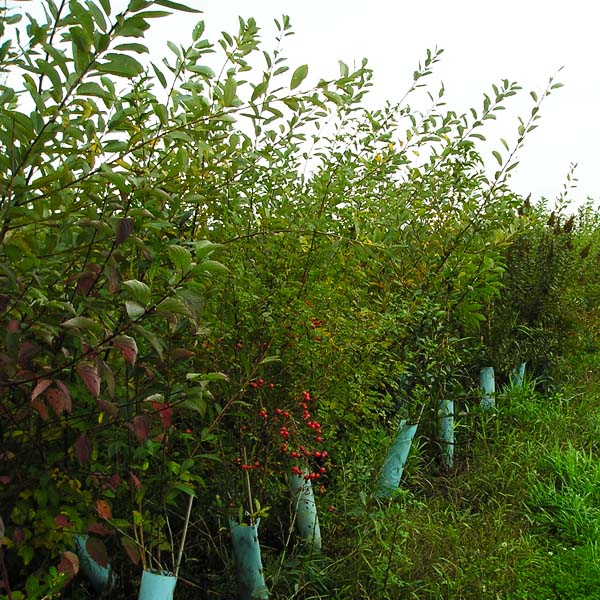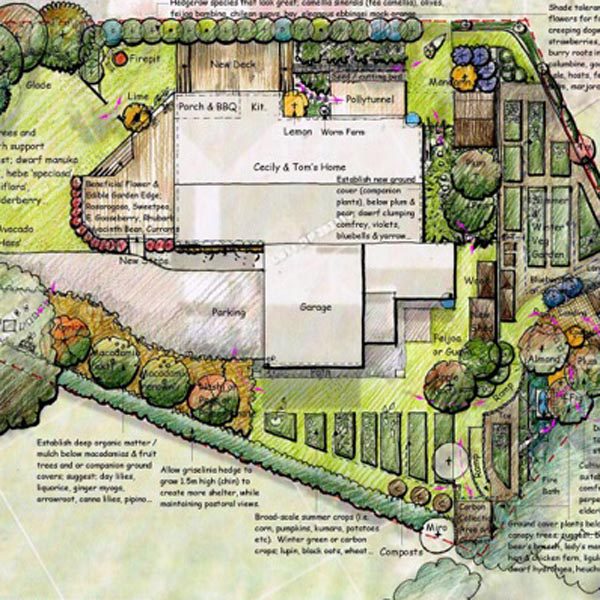Seven Tips for a Resilient Landscape
We talk about resiliency now the way we talked about sustainability yesterday. The ability to anticipate risk, navigate change and bounce back is a key component of a resilient landscape. How do you design in resiliency to ensure your edible garden or lifestyle block is able to weather a drought, changing climate or consistently provide fodder for animals, bees and your table? Here’s how…writes Bena Denton
Diversity is that special kind of abundance, whereby a garden or any landscape is oozing with energy and vitality. As a newbe gardener I recall visiting a friends garden and feeling its ‘aliveness’ and and how it ‘hummed’. Ever since I have striven to replicate this feeling and in recent years I have reflected on what made this particular garden sing? I have felt the same feeling in the depth of our native bush too and I believe this ‘hum’ is the complex web of a healthy eco-system. Some of the strategies I’ve come to recognise, and build into the landscapes I design, centre around actions that increase resiliency and here I share them with you…
- Matching the crop or plant to the right habitat. An healthy, ecological response to the land is often one of diverse plantings; it is rare that mono-anything is the best response. Usually in a garden there are sunny spots, shady areas, windy, wet or dry places and responding to these cues gives the clues to what to plant, and is called ‘matching crop to habitat’. There are many benefits to this approach; because we are working with nature not imposing our will upon it, patterns in the landscape consequently emerge (which are often beautiful and feel ‘right’) there is a more diverse range of land uses and what we do grow is more abundant.
- A shift to perennial crops. As climate change and erratic weather patterns increase we are seeing a shift to perennial based plants both in agri-business and the home garden. Perennials are those plants that we establish and then they keep cropping for us, such as fruit trees, berry bushes, globe artichoke and perpetual spinach. Perennials, unlike annuals that have to be planted anew each year, mean there is less ongoing work and maintenance. Additionally perennials have root zones that tend to go deeper, allowing them to tolerate drought better. As the soil is not tilled, a healthy soil web establishes that is able to draw up its own nutrients, lock up carbon and because the soil is covered in plants at all times, the soil is kept in good condition.
- Each function is served by many elements. This is a permaculture (permanet-agriculture) principal that I integrate into all my garden and lifestyle block designs. Essentially this means that any basic need, be it water, food, fodder or power should be served in two, preferable three or more ways. For example a shelter belt tree could buffer wind, provide bee nectar and fix nitrogen. Another good example is the eminent metering of water in urban New Plymouth, making it sensible to future proof now and instal a water tank, perhaps with an auto switch to municipal supply when levels dip.
- Multipurpose hedgerows are an old fashioned method of dividing paddocks and providing animal and human fodder. They are one of my favourite design elements to incorporate into any productive landscape, because they serve so many purposes. On a lifestyle block or farm, hedge rows are ideal on the inside or North-facing aspect of a shelter-belt and contain a variety of species that serve many functions, for example; flax is a wonderful low wind break, eaten by stock it is a self-medicator for internal parasites such as worms, birds love the flowers, you can weave with it and in the veg garden, flax in the border will mean you are never without garden ties and stakes. Other hedgerow species may include; crab apples, willow, elderberry, currants and many more…
- Support species are essential for a resilient, low to no-input system (if low maintenance and maximum output is your thing). Instead of adding chemical nitrogen how about growing it? Nitrogen fixing plants make nitrogen available to other plants via either leaf fall or the symbiotic fungi that form in association with plant roots (those little nodules you see on clover or kowhai roots for example). Dynamic accumulators are also ideal, such as comfrey, yarrow and dandelion as their tap roots mine minerals, such as potassium from down deep, making them accessible to the perennial plants roots. Once nitrogen and potassium are available, most other minerals in the soil come into balance.
- No system is complete with out animals; all natural eco-systems have animals in them and if you truly desire to see your back yard flourish then animals are a must. I recommend beginning with chickens as they are an easy, well domesticated bird that provides so many yields; eggs and manure foremost. Wherever I do visual soil assessments, it is invariable its next to the chook coop, pig hutch, cow shed etc that the highest soil life is visible and soil life is a great indicator of high resilience.
- The ultimate resilient system is wilderness… whereby a little corner of your garden somewhere is left to its own devices. Twelve years ago I planted my first food forest (complex multi-species orchard), threw some chooks in and waited… so much popped up; celery, chamomile, self seeding silverbeet, pumpkin and of course eggs. I began to forage and eat more from this wee space than my actual veg garden. A huge amount of insects, bees and butterflies also took up residence. We are culturally conditioned to control everything and perhaps forget that mother-nature is abundant and does it best – go a little wild!
Bena Denton is an Ecological Garden Designer and is part of the GreenBridge team. She lives with her family in Omata and is enjoying regenerating their 10acre property. Ask for Bena at Big Jims, as part of their Landscaping Design Service. www.greenbridge.co.nz



